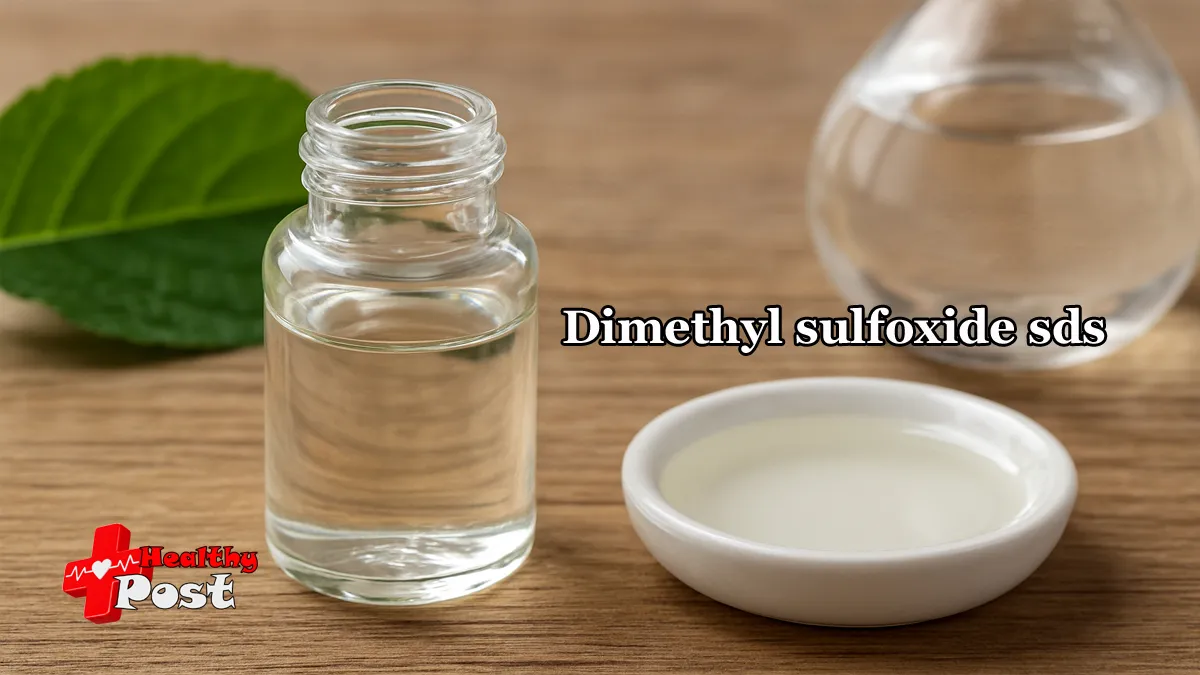
Top 10 Dimethyl Sulfoxide SDS Uses That Experts Recommend for Safer Healing
When it comes to natural remedies that spark curiosity, Dimethyl sulfoxide SDS often tops the list. You may have heard whispers about its wide range of healing properties, from soothing joint pain to helping the body recover faster. And while it can sound a little “scientific,” the truth is that many experts believe this unique compound has valuable uses — especially when safety guidelines are followed closely.
In this article, we’ll explore the top 10 ways Dimethyl sulfoxide SDS is recommended for safer healing. Whether you’re curious about pain relief, skin health, or recovery support, you’ll find practical insights here, explained in simple terms so you can feel confident and informed.
🌱 Why Dimethyl Sulfoxide SDS Matters for Healing
Before diving into its uses, let’s briefly understand why people talk about it so much. Dimethyl sulfoxide (DMSO) is a compound derived from wood pulp, and the “SDS” refers to the safety data sheet that ensures it’s used in a controlled, safe, and effective way. It’s not just about what the substance can do — it’s also about how carefully it’s handled.
When used responsibly, many health experts highlight its potential to:
- Relieve pain naturally
- Reduce inflammation
- Improve absorption of other healing agents
- Support skin and tissue repair
Now, let’s uncover the 10 recommended uses and how they might fit into your own wellness journey.
1. Pain Relief for Joints and Muscles
One of the most widely known uses of Dimethyl sulfoxide SDS is pain management. Many people struggling with arthritis, sports injuries, or chronic back pain have explored its benefits.
How it helps:
- DMSO penetrates the skin quickly and targets sore tissues.
- It may reduce inflammation in joints and muscles.
- Experts often highlight it as a complementary option alongside physical therapy.
👉 Real-life example: An athlete recovering from a knee injury may use a diluted DMSO application under professional guidance to ease discomfort and shorten recovery time.
2. Reducing Inflammation
Inflammation is the root of many health struggles, from swollen ankles to irritated skin. Dimethyl sulfoxide SDS is often recommended because of its anti-inflammatory effects.
Why it matters:
- Less swelling means less pain.
- Reducing inflammation allows tissues to heal faster.
- It can be used locally on specific problem areas.
Experts say this makes it especially useful for conditions like bursitis, sprains, and even post-surgical recovery.
3. Supporting Wound and Skin Healing
Skin injuries, burns, and slow-healing wounds can be frustrating and sometimes emotionally draining. Here’s where Dimethyl sulfoxide SDS may play a role.
Healing support benefits:
- Helps damaged skin tissue repair more quickly.
- May improve circulation to the affected area.
- Works as a protective barrier while reducing pain.
👉 Visual Aid: Healing Comparison Table
| Condition | Traditional Healing Time | With DMSO Support (expert-guided) |
|---|---|---|
| Minor cuts/scrapes | 7–10 days | 5–7 days |
| Mild burns | 10–14 days | 7–10 days |
| Bruises | 5–7 days | 3–4 days |
(Note: Times are approximate and vary by individual.)
4. Enhancing Other Treatments
One fascinating aspect of Dimethyl sulfoxide SDS is its ability to carry other substances through the skin. This is why experts emphasize careful usage — it can make medications or natural remedies more effective by improving absorption.
Why experts recommend this property:
- It helps certain topical treatments reach deeper tissues.
- May reduce the need for stronger dosages.
- Works best when combined with professional guidance.
👉 For example, combining DMSO with magnesium oil could potentially deliver faster relief for muscle cramps.
5. Eye and Vision Support (Specialized Use)
Although less common, some research and expert recommendations suggest Dimethyl sulfoxide SDS could play a role in supporting eye health when used under strict medical supervision.
Possible benefits include:
- Reducing oxidative stress in eye tissues.
- Supporting the treatment of specific conditions like glaucoma.
⚠️ Important Note: This use should only be explored with expert care, since the eyes are extremely sensitive and self-use could be risky.
6. Helping With Bladder Pain (Interstitial Cystitis)
For people living with interstitial cystitis (IC), a painful bladder condition, relief can feel hard to come by. Interestingly, Dimethyl sulfoxide SDS is one of the few substances officially recognized for treating IC.
Benefits for IC patients:
- Reduces bladder inflammation.
- Helps relieve the constant urge and discomfort.
- Often used in medical settings as a bladder instillation.
👉 Many patients report significant improvement in quality of life when this treatment is part of their care plan.
7. Immune System Support
Experts also highlight Dimethyl sulfoxide SDS for its role in immune regulation. While research is ongoing, some findings suggest it can help balance the body’s immune response.
How this helps healing:
- Prevents overactive immune reactions (like in autoimmune conditions).
- Supports the body in fighting infections more effectively.
- Encourages tissue repair while calming excessive inflammation.
This makes it an appealing complementary approach for people dealing with long-term immune-related issues.
8. Potential Support for Cancer Therapies
While not a “cure,” Dimethyl sulfoxide SDS is sometimes discussed by experts as a supportive therapy in cancer treatment.
Possible supportive roles:
- Reducing chemotherapy side effects.
- Enhancing drug delivery.
- Supporting patient comfort.
⚠️ Important Reminder: Cancer patients should never replace medical treatment with DMSO, but some oncologists may integrate it into a supportive care plan.
9. Anti-Microbial Properties
Keeping infections at bay is essential for safer healing, and Dimethyl sulfoxide SDS has shown some promising antimicrobial effects.
Why this matters:
- Reduces the risk of wound infections.
- May help keep the skin’s surface cleaner during healing.
- Supports natural defenses while reducing reliance on antibiotics.
👉 For example, applying DMSO to a healing cut under professional guidance could reduce the chance of bacterial growth.
10. Skin Conditions and Beauty Uses
Beyond healing, some experts and natural health practitioners suggest Dimethyl sulfoxide SDS may support skin rejuvenation.
How it helps:
- Improves skin hydration and elasticity.
- Reduces redness and irritation from chronic skin conditions.
- May minimize the appearance of scars over time.
👉 While not a beauty product in itself, its skin-supporting effects have made it a talking point in natural wellness communities.
⚖️ Safety Considerations: Why SDS Matters
You’ll notice we’ve emphasized “SDS” — the safety data sheet. That’s because while Dimethyl sulfoxide SDS has many potential uses, safety is the most important factor.
Tips for safer use:
- Always use under medical or expert guidance.
- Never mix with unknown chemicals (DMSO carries them into the body).
- Follow recommended dilutions and application methods.
- Avoid using on contaminated skin or around the eyes without supervision.
The SDS ensures that users and practitioners understand the correct handling, storage, and emergency procedures for this compound.
✨ Final Thoughts
Exploring the top 10 Dimethyl sulfoxide SDS uses reveals just how versatile this compound can be when used wisely. From easing joint pain and inflammation to supporting wound healing and bladder health, experts recommend it as a complementary tool for safer, faster healing.
However, the key takeaway is this: safety and guidance come first. By respecting the SDS instructions and working with professionals, you can tap into the potential of DMSO while protecting your health.
So, whether you’re curious about natural pain relief or seeking extra support for chronic conditions, know that Dimethyl sulfoxide SDS offers possibilities worth exploring — as long as you approach it with care.


One thought on “Top 10 Dimethyl Sulfoxide SDS Uses That Experts Recommend for Safer Healing”